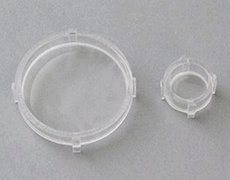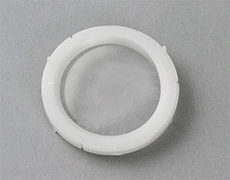Newsletters
Atelocollagen Permeable Membrane for transplantation of cell sheets
22 November 2017
In this edition of the newsletter, we summarize a research paper on corneal endothelial regeneration using Atelocollagen Permeable Membrane for 6-well Plate.
Transplantation of corneal endothelial cells differentiated from skin progenitor cells
Article information
Skin-Derived Precursors as a Source of Progenitors for Corneal Endothelial Regeneration.
Inagaki E, Hatou S, Higa K, Yoshida S, Shibata S, Okano H, Tsubota K, Shimmura S.
Stem Cells Transl Med. 2017 Mar;6(3):788-798. PMID: 28186681
Overview
Corneal blindness is the fourth most common cause of blindness; half of corneal blindness cases are related to corneal endothelial cell dysfunction.
The most common treatment for corneal blindness is allogeneic corneal transplantation, but a worldwide donor shortage, engraftment failure, immune rejection, and complications such as glaucoma are challenges for use of this procedure.
The author’s group previously reported that corneal-derived progenitor cells (COPs) can be differentiated into functional corneal endothelial cells, but noted that the available COP supply is limited because the cornea is small in size and the proliferative capacity of COPs is limited.
Therefore, this paper focused on skin precursor cells (SKPs) having self-renewal ability and pluripotency. Specifically, SKPs were isolated from human and rodent skin, induced to differentiate into corneal endothelial cells, and transplanted into the rabbit eye.
Differentiation induction of human and mouse SKPs resulted in corneal endothelial cell-related gene and protein expression; notably, sodium-potassium pump function was similar to that of native corneal endothelial cells.
Corneal endothelial cells (sTECEs) derived from human and mouse SKPs were seeded on Atelocollagen Permeable Membrane and transplanted into the rabbit cornea. The resulting transplanted cornea maintained transparency similar to that in the control group, and the corneal thickness was similar to that of a normal cornea.
These results suggested that SKPs could be used as a source of autologous cells for treating corneal endothelial diseases.
Biodegradable Atelocollagen Permeable Membrane with high transparency
Product name
– Atelocollagen Permeable Membrane for 6-well Plate (Cat. No.: CM-6)
– Atelocollagen Permeable Membrane for 24-well Plate (Cat. No.: CM-24)

